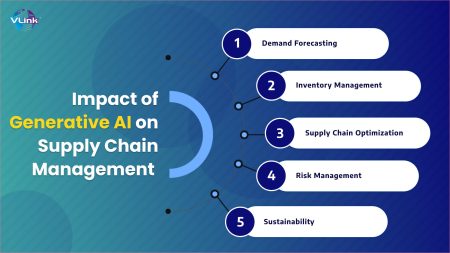Conversion Rate Optimization (CRO) is often reduced to a buzzword synonymous with A/B testing. While testing variants of a landing page or CTA color has value, true CRO mastery dives far deeper. For any conversion rate optimization agency, surface-level tweaks barely scratch the surface of what’s possible. The real work lies in understanding user behavior, leveraging data science, and building experiences that persuade.
Understanding User Intent: The Foundation of Effective CRO
A/B tests fail when based on assumptions instead of insight. Before changing a single pixel, CRO experts begin by uncovering why users aren’t converting. This involves a deep dive into analytics tools (like Google Analytics, Hotjar, or Clarity) to identify friction points.
For instance, if a SaaS trial signup page sees a high bounce rate, the issue might not be the headline—but the fact that users aren’t ready to commit. This calls for a user intent audit. Experts analyze bounce patterns, scroll depth, and session recordings to uncover barriers. The next step is segmenting users by traffic source, intent, or device to personalize strategies accordingly.
How to execute:
- Install behavior analytics tools.
- Set up funnel tracking to monitor where users drop off.
- Conduct surveys and user interviews to collect qualitative insights.
- Create user personas aligned with each funnel stage.
Auditing the Entire Customer Journey
CRO doesn’t begin and end on the landing page. Conversion happens through a journey—ads, emails, web copy, forms, checkout. Experts assess the full path and look for continuity gaps that sabotage trust and momentum.
For example, an ad promising a “Free eBook” that leads to a product page with no mention of said eBook erodes credibility. A CRO specialist would flag that as a conversion blocker and optimize the messaging consistency across touchpoints.
How to execute:
- Map out the full customer journey from first impression to post-conversion.
- Align messaging and offers across each stage.
- Test continuity across different device types and screen sizes.
- Use UTM tracking to assess campaign-level drop-offs.
Building a Hypothesis-Driven Testing Framework
Instead of running random experiments, CRO experts use a hypothesis-driven framework. They prioritize tests based on business impact, complexity, and evidence.
Take an e-commerce checkout form. A CRO agency might hypothesize: “Reducing the number of required fields will decrease cart abandonment.” This is backed by session replays showing users rage-clicking or abandoning at the billing step. The test would then follow a documented structure: Hypothesis → Variant → Success Metric → Duration.
How to execute:
- List assumptions based on analytics and user feedback.
- Write structured hypotheses (if/then format).
- Use prioritization models like ICE (Impact, Confidence, Ease) to determine test order.
- Run tests with statistical rigor (minimum sample size, duration).
Leveraging Psychological Triggers
CRO isn’t just technical—it’s deeply psychological. Experts weave cognitive biases and emotional levers into design and messaging. Scarcity (“Only 3 left”), authority (testimonials from known experts), or social proof (thousands of users) can nudge hesitant users.
For example, a conversion uplift was achieved on a product page by adding a countdown timer during a flash sale. Not because it was flashy, but because it tapped into urgency bias.
How to execute:
- Identify underutilized cognitive triggers relevant to your audience.
- A/B test these elements in isolated formats (e.g., urgency in CTA vs. in header).
- Observe not just conversions but user engagement and exit behavior.
Mobile-First Optimization
With over 60% of web traffic coming from mobile devices, CRO efforts must prioritize mobile usability. Often, websites designed for desktop don’t translate well on smaller screens, leading to frustrating experiences.
A CRO pro doesn’t just resize the desktop layout—they rethink content hierarchy, touch targets, and load speed. For example, replacing lengthy product descriptions with expandable sections on mobile can drastically reduce bounce rates.
How to execute:
- Run mobile-specific audits using PageSpeed Insights and mobile emulators.
- Simplify navigation and CTA accessibility for touch interfaces.
- Optimize image sizes and lazy-load scripts to improve load time.
- Conduct mobile-only user testing and heatmaps.
Post-Test Analysis and Iteration
The end of a test isn’t the end of CRO. Experts dig into the data for deeper insights—why a test failed or succeeded and how to adapt learnings. It’s not just about winners and losers but continuous refinement.
Say a pricing test increases conversions but increases refund rates. This requires a deeper look into post-conversion behavior and possibly segmenting test results by customer lifetime value.
How to execute:
- Always validate test results with confidence thresholds (95% or higher).
- Segment data by source, device, and customer type post-test.
- Combine quantitative metrics with qualitative feedback (e.g., post-purchase surveys).
- Create documentation of learnings for future strategy alignment.
Collaboration Across Teams
CRO is not a siloed discipline. It intersects with SEO, design, development, and paid media. Agencies that thrive in CRO have tight workflows between strategists, UX designers, copywriters, and developers.
For example, a proposed UX change must be technically feasible and SEO-friendly. A CRO lead will coordinate between SEO analysts (to preserve crawlability) and developers (to ensure smooth rollout).
How to execute:
- Hold cross-functional test planning sessions.
- Use collaborative tools like Figma, Loom, and Trello for async feedback.
- Involve stakeholders in the prioritization process.
- Track shared KPIs to ensure collective accountability.
True CRO is not a one-and-done effort, nor is it solely about button color tests. It is a dynamic, strategic discipline rooted in understanding users, optimizing systems, and aligning with business goals. For any conversion rate optimization agency, success lies not in running more tests—but in asking better questions and executing smarter strategies.







